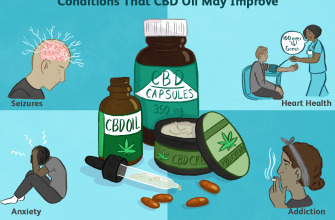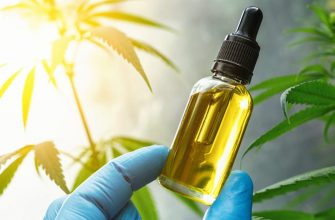Foreword: The Plant Teacher
ancient
peoples tuned to ecological subtleties called some
mind-altering plants and mushrooms as “teachers”. What did you teach
cannabis humanity?
Long
before the advent of writing, cannabis occupied a prominent place in shamanistic
traditions of many cultures, which were used practically for
every part of the plant. The stem provided fibers for ropes and cloth. seeds
– a rich source of protein and essential fatty acids, used in
food. The roots and resinous tops of the flowers have been used medicinally and
ritual preparations.
How
explains the wide and persistent appeal of this herb? Scientific
attempts to pinpoint the psychoactive ingredients that cause
the mild euphoria favored by cannabis enthusiasts began in the 19th century. But
researchers were stymied by the complex, lipophilic (oily)
the nature of the plant, which required sophisticated technology to probe
and analysis.
Key
The turning point for modern cannabis research came in
1964, when Israeli scientists Raphael Mehulam and Yechiel Gaoni
isolated and identified tetrahydrocannabinol (THC) as high
pathogen. Mehulam also elucidated the chemical structure of several
other components of cannabis, including cannabidiol (CBD), intriguing, not
intoxicating molecule. He named these unique botanical compounds
“cannabinoids” and compared the plant to a “pharmacological treasure trove”.
hype
around THC, the queen bee of cannabinoid pharmacology, has been the main
stimulus for scientists who sought to understand how marijuana gives its
psychoactive effects. What happens in the brain that makes people
feel inspired? Feel hungry or vice versa
calmness? Or, for example, feel a little less burdened
life difficulties? Animal studies on THC
laid the foundation for studying the mechanism of its action on the molecular
level. Another quarter of a century will pass before cannabis, teacher
plants, will lead researchers to one of the greatest scientific
discoveries of all time – in fact, to a series of discoveries – which revealed
the existence and inner workings of a protective, system-wide regulatory
system activated by cannabinoid compounds.
Part 1: The Canonical Endocannabinoid System
1988: CB1 receptor
The big breakthrough came in 1988 when scientists at St. Louis University School of Medicine determined that the rat brain has receptor sites—specialized protein molecules embedded in cell membranes—that are activated by THC. Originally identified by Prof. Allyn Howlett and her graduate student William Dewayne and cloned two years later, this cannabinoid receptor, dubbed “CB1”, was found to be much more abundant in the mammalian brain than any other G protein-coupled receptor (GPCR).
All animals with a spinal cord have CB1 receptors.
Nearly half of all pharmaceuticals approved in the US target GPCRs, which are a superfamily of over 800 different human receptors that share the same basic protein structure—hundreds of amino acids linked together in a crumpled chain that crosses the cell membrane seven times. CB1 receptors are concentrated in the brain and central nervous system of mammals. Subsequent studies have shown that CB1 receptors are also present to a lesser extent in the gut, skin, and various internal organs. All animals with spinal cords (and going back even earlier to ancient sea spray) have CB1 receptors. CB1 signaling will be critical to the regulation of numerous physiological processes, including the body’s response to stress and how we experience pain.
The discovery of the CB1 receptor will have a huge impact on almost every field of medical science. This opened the floodgates of research into our innate cannabinoid biology. Why do we have receptors that are able to respond to plant cannabinoids like THC? Scientists realized that there must be an endogenous, THC-like compound, our internal cannabis, so to speak, that signaled through these receptors. A search has begun for the CB1 internal trigger.
1992: anandamide
N-arachidonoylethanolamine, the first endogenous cannabinoid neurotransmitter identified by scientists. (A neurotransmitter is a chemical that nerve cells use to send signals to other neurons.) In 1992, a trio of researchers at the Hebrew University of Jerusalem—Rafael Mehulam, William Dewayne, and Lumir Hanus—isolated a new lipid neurotransmitter that binds to the CB1 receptor in the brain. pig tissues. They called it anandamide, which means bliss in Sanskrit, and the word suggested its effect on mood.
Although anandamide and THC do not have a similar molecular structure, they behave in a similar way when they bind to the CB1 receptor, sort of like a key being inserted into a lock. Anandamide, an endocannabinoid, and THC, a phytocannabinoid, are signaling molecules (ligands) that turn on CB1, initiating a cascade of changes within cells that regulate a surprising range of physiological functions, including appetite, mood swings, glucose metabolism, pain perception, and even fertility. High anandamide levels are critical for ovulation, and fluctuations in anandamide levels during the gestational cycle can affect fetal development.
Cells produce anandamide “on demand” when our body needs to maintain balance during stressful breaks. Subsequent studies would show that exercise increases anandamide levels, resulting in a “high state”. By binding to CB1, anandamide protects neurons and facilitates neurogenesis, the creation of new brain cells in adult mammals. Every animal with a nervous system produces anandamide.
1993: CB-2 receptor
Scientists have identified a second type of cannabinoid receptor, “CB2”, which is present throughout the immune system, peripheral nervous system, metabolic tissues, and many internal organs. First published in Nature in 1993, this discovery shed new light on how cannabinoid signaling regulates inflammation and why cannabinoid therapy may be a useful treatment for a range of autoimmune diseases. Aberrant CB2 receptor signaling is involved in metabolic syndrome, peripheral neuropathy, insulin resistance, liver disease, and other inflammatory conditions.
CB2 receptors are found on all immune cells, including microglia and astrocytes, which modulate immune function in the brain. However, for the most part, CB2 receptors are significantly less expressed in the central nervous system than CB1. But CB2 rises significantly (turns on at high speed) in response to a traumatic brain injury or a neurodegenerative condition such as Alzheimer’s disease or multiple sclerosis.
THC stimulates both types of cannabinoid receptors. However, when THC binds to CB2, it does not produce the psychoactive high that cannabis is known for, because CB2 receptors are not concentrated in the brain. Binding of THC to CB1, an abundant receptor in the central nervous system, causes a “high state”. Therefore, researchers have targeted healing without the “high condition” by developing drugs that stimulate the CB2 receptor while bypassing CB1. But anandamide, an endocannabinoid that binds to CB1, actually has very little binding affinity for CB2 – which means there must be another natural compound, an endogenous ligand produced by the body, that activates CB2 receptors.
1995: 2-AG
Found in canine intestinal tissue, 2-Arachidonoylglycerol, or 2-AG for short, was identified as an endocannabinoid by Dr. Mehulam and his team, and by Japanese scientists in 1995. Compared to anandamide, 2-AG appeared to be more potent, more abundant, and more widely expressed throughout the body. The level of 2-AG in the human brain is about 170 times higher than that of anandamide, and 2-AG binds efficiently to both cannabinoid receptors, CB1 and CB2.
2-AG levels in the brain rise after a head injury or stroke.
Anandamide and 2-AG are lipid neurotransmitters that signal throughout the brain and body to help maintain internal homeostasis in the midst of a flurry of ever-changing environmental influences. As the main endogenous ligand for both CB1 and CB2, 2-AG plays an important role in the regulation of immune function. It reduces the expression of pro-inflammatory cytokines and curbs overactive immune cells. 2-AG levels in the brain rise after a head injury or stroke.
Like anandamide, 2-AG is involved in the modulation of a wide range of mental and physiological processes. Although they are similar and complement each other in many ways, there are certain functional differences between the two endocannabinoids. Anandamide and 2-AG protect cells from oxidative damage, and both compounds are adaptive in response to stress, but in different ways. And they are created and deactivated by various metabolic enzymes.
1993: CB-2 receptor
Scientists have identified a second type of cannabinoid receptor, “CB2”, which is present throughout the immune system, peripheral nervous system, metabolic tissues, and many internal organs. First published in Nature in 1993, this discovery shed new light on how cannabinoid signaling regulates inflammation and why cannabinoid therapy may be a useful treatment for a range of autoimmune diseases. Aberrant CB2 receptor signaling is involved in metabolic syndrome, peripheral neuropathy, insulin resistance, liver disease, and other inflammatory conditions.
CB2 receptors are found on all immune cells, including microglia and astrocytes, which modulate immune function in the brain. However, for the most part, CB2 receptors are significantly less expressed in the central nervous system than CB1. But CB2 rises significantly (turns on at high speed) in response to a traumatic brain injury or a neurodegenerative condition such as Alzheimer’s disease or multiple sclerosis.
THC stimulates both types of cannabinoid receptors. However, when THC binds to CB2, it does not produce the psychoactive high that cannabis is known for, because CB2 receptors are not concentrated in the brain. Binding of THC to CB1, an abundant receptor in the central nervous system, causes a “high state”. Therefore, researchers have targeted healing without the “high condition” by developing drugs that stimulate the CB2 receptor while bypassing CB1. But anandamide, an endocannabinoid that binds to CB1, actually has very little binding affinity for CB2 – which means there must be another natural compound, an endogenous ligand produced by the body, that activates CB2 receptors.
1995: 2-AG
Found in canine intestinal tissue, 2-Arachidonoylglycerol, or 2-AG for short, was identified as an endocannabinoid by Dr. Mehulam and his team, and by Japanese scientists in 1995. Compared to anandamide, 2-AG appeared to be more potent, more abundant, and more widely expressed throughout the body. The level of 2-AG in the human brain is about 170 times higher than that of anandamide, and 2-AG binds efficiently to both cannabinoid receptors, CB1 and CB2.
2-AG levels in the brain rise after a head injury or stroke.
Anandamide and 2-AG are lipid neurotransmitters that signal throughout the brain and body to help maintain internal homeostasis in the midst of a flurry of ever-changing environmental influences. As the main endogenous ligand for both CB1 and CB2, 2-AG plays an important role in the regulation of immune function. It reduces the expression of pro-inflammatory cytokines and curbs overactive immune cells. 2-AG levels in the brain rise after a head injury or stroke.
Like anandamide, 2-AG is involved in the modulation of a wide range of mental and physiological processes. Although they are similar and complement each other in many ways, there are certain functional differences between the two endocannabinoids. Anandamide and 2-AG protect cells from oxidative damage, and both compounds are adaptive in response to stress, but in different ways. And they are created and deactivated by various metabolic enzymes.
2001: Retrograde Alarm
In 2001, three groups of scientists published papers showing that endocannabinoids are involved in a unique form of intracellular communication known as “retrograde signaling.” While other neurotransmitters normally travel in one direction from the signaling cell across the synapse (gap) to the receiving cell, anandamide and 2-AG both travel in the other direction, from the postsynaptic receiving cell to the presynaptic sender. This is why endocannabinoids are called “retrograde messengers”. They play a key role in controlling how quickly (or slowly) other neurotransmitters fire.
Just as the immune system protects against viruses and other pathogens, the endocannabinoid system protects the brain from overstimulation, inflammation, and injury.
Too much stimulation can damage or destroy the cell. In response to a surge in glutamate, the brain’s main excitatory neurotransmitter, the postsynaptic host cell releases endocannabinoids, which travel backward through the synaptic cleft to bind to the cannabinoid receptor on the transmitter cell, which generates glutamate. The CB1 receptor tells the presynaptic cell to turn down the volume of glutamate. Retrograde signaling in the prefrontal cortex, amygdala, and hypothalamus facilitates overstimulation of the “HPA axis” that governs the stress response. Endocannabinoids can also “disinhibit” or stimulate arousal by inhibiting the synaptic activity of GABA, a major inhibitory neurotransmitter. Essentially, the retrograde mechanism functions as a dynamic, bi-directional feedback loop that fine-tunes synaptic transmission, inhibiting excessive physiological activity.
Just as the immune system protects against viruses and other pathogens, endocannabinoids, as retrograde messengers, protect the brain from overstimulation, inflammation, and injury. Until 2001, retrograde signaling was thought to occur only during embryonic development of the brain and central nervous system. Since then, researchers have learned that endocannabinoids regulate fetal and adult neurogenesis (the creation of new neurons in the brain) as well as stem cell migration.
2004: Clinical Endocannabinoid Deficiency
Dr. Ethan Russo, a neurologist and cannabinoid scientist, coined the term “clinical endocannabinoid deficiency” in 2004. He suggested that reduced endocannabinoid function underlies a number of pathologies. Rousseau specifically mentioned four conditions—migraine, irritable bowel, fibromyalgia, and clinical depression—that often appear as a comorbid cluster of symptoms in cannabinoid-deficient patients. Subsequent research would support Rousseau’s thesis by linking endocannabinoid deficiency to a variety of aberrant conditions, including epilepsy, PTSD, autism, alcoholism, and other neurodegenerative diseases.
Cannabis therapy and other holistic therapies that enhance cannabinoid receptor signaling may be viable strategies for treating clinical disorders of endocannabinoid deficiency.
Several factors contribute to endocannabinoid dysfunction. Some of them are genetic: scientists have identified polymorphisms or mutations in the amino acid sequences that code for cannabinoid receptors and metabolic enzymes that regulate endocannabinoid levels. Compelling evidence suggests that certain genetic variants may, in some cases, dictate health outcomes or, more likely, predispose to certain diseases.
Epigenetic factors—poor diet, lack of exercise, poor sleep, drug abuse, poverty—are also paramount and in some ways more significant in terms of developing chronic stress. Chronic stress, a significant risk factor for many diseases, depletes endocannabinoid tone, leading to inflammation, hypertension, elevated cortisol, hormonal imbalances, elevated blood sugar, cognitive impairment, and increased susceptibility to disease. It is logical that cannabis therapy and other holistic therapies that enhance cannabinoid receptor signaling may be viable strategies for the treatment of clinical endocannabinoid deficiency disorders.
Part 3: Path Beyond
2005: PPARs – Nuclear Receptors
Researchers have continued to discover therapeutic actions of endocannabinoids and plant cannabinoids that are not mediated by either CB1 or CB2. A 2005 article in the journal Life Science reported for the first time that cannabinoid compounds bind to “PPAR-gamma”, a receptor located on the surface of the cell nucleus.
PPAR-gamma is part of a family of lipid-sensitive receptors activated by peroxisome proliferators that regulate gene expression, lipid metabolism, and energy storage. Anandamide and 2-AG both activate PPAR-gamma, as does CBD. Preclinical studies show that PPAR-gamma activation reduces amyloid beta plaques in the brain associated with dementia. Dementia is acquired dementia, a persistent decrease in cognitive activity with the loss to some extent of previously acquired knowledge and practical skills and the difficulty or impossibility of acquiring new ones. Prevents insulin resistance, other diabetic complications and participates in the antitumor effect of cannabinoids.
But how do anandamide and 2-AG—or CBD—get inside the cell? How can these oily compounds move in the aquatic environment of the cell? How do they find their way to the nucleus, where they activate PPARs that attach to “promoter” DNA segments that initiate or prevent the transcription of certain genes?
2009: Proteins and Binding Fatty Acids
Researchers at Stony Brook University in New York made huge strides in solving the mystery of endocannabinoid mobility in 2009. They identified a fatty acid-binding protein (FABP) that transports anandamide through the cell’s watery inner ecosystem. These transport molecules also transport 2-AG and other lipid compounds to the greater transcendent within the cell.
After they finish signaling through the cannabinoid receptor, anandamide or 2-AG attaches itself to the FABP transporter, slips through the lipid bilayer of the cell membrane, and sets sail among the organelle archipelago. Fatty acid binding proteins can target endocannabinoids to the nucleus for PPAR activation, or to other locations within the cell where anandamide and 2-AG are eventually deactivated and broken down into metabolites.
Subsequently, Stony Brook scientists discovered that these same FABPs can function as carrier molecules for CBD and THC, which are also poorly water-miscible. When they hop aboard this lipid transport vehicle, plant cannabinoids crowd out their endogenous counterparts and delay their intracellular journey. Consequently, anandamide and 2-AG hang on the cell surface for longer than usual, which enhances cannabinoid receptor signaling. Essentially, CBD and THC inhibit reuptake and delay the deactivation of anandamide and 2-AG. This may be one of the ways that CBD specifically enhances endocannabinoid tone without actually binding directly to CB1 or CB2.
2012: mitochondria
In 2012, French scientists reported the presence of CB1 receptors on the membranes of mitochondria, energy-generating organelles inside cells. This discovery shed new light on the role of the endocannabinoid system in the regulation of mitochondrial activity, which is critical for cell function. Key biological pathways that involve mitochondria, including energy homeostasis, neurotransmitter release, and oxidative stress, are modulated by endocannabinoids and plant cannabinoids.
“Neuroinflammatory processes that contribute to the progression of normal brain aging and the pathogenesis of neurodegenerative diseases are suppressed by cannabinoids.”
Oxidative stress is a natural by-product of mitochondrial activity, but high levels of oxidative stress are a sign that something is wrong in the cell. By effectively neutralizing oxidative stress and mitigating free radical damage, cannabinoids provide a wide range of therapeutic benefits, from slowing down the aging process to reducing the risk of cancer-related DNA damage. As reported in Philosophical Writings of the Royal Society (London): “Cannabinoids, as regulators of mitochondrial activity, protect neurons at the molecular level. Neuroinflammatory processes that contribute to the progression of normal brain aging and the pathogenesis of neurodegenerative diseases are suppressed by cannabinoids, suggesting that they may also influence the aging process at a systemic level.”
By binding directly to CB1 receptors on the mitochondrial membrane, THC restores mitochondrial activity and their oxidative excess. CBD interacts with a variety of mitochondrial receptors, including the sodium-calcium exchanger (NCX), which opens and closes an ion channel that facilitates the flow of electrically charged calcium atoms. The regulation of mitochondrial calcium levels is one of the mechanisms by which endocannabinoids and CBD protect neurons and maintain cellular homeostasis. MAGL, the main enzyme that breaks down 2-AG, is conveniently located in the mitochondria, while FAAH metabolizes anandamide when the bliss molecule is deposited in another organelle, the endoplasmic reticulum – the last stop on our FABP-driven “Tour de Force” through the intracellular space .
2013: Endocannabinoidoma
Twenty-five years after the discovery of the CB1 receptor, the canonical endocannabinoid system as a conceptual framework has been challenged by a number of new discoveries. At the very least, it seemed that the broader definition of “cannabinoid receptor” was justified. A definition that recognizes three main groups of receptors that bind to anandamide and 2-AG: TRP receptors and other ligand-sensitive ion channels, nuclear PPAR receptors, and several G protein-coupled receptors, in addition to CB1 and CB2.
THC, CBD, and other plant cannabinoids are also involved in promiscuous binding with multiple receptor partners. What’s more, various herbs and spices, not just hemp, contain compounds that bind to CB1 and/or CB2. In addition to herbal medicine, the beneficial effects of other holistic therapies – fasting, exercise, osteopathy, acupuncture – are also mediated by canonical cannabinoid receptors.
Accordingly, scientists began to think in terms of an “extended endocannabinoid system,” which includes many lipids derived from fatty acids, in addition to anandamide and 2-AG. These endocannabinoid-like compounds have emerged as important signaling molecules in their own right, and some of them are also metabolized by FAAH, an enzyme that breaks down anandamide. In 2013, Vincenzo Di Marzo, a leading cannabinoid scientist, introduced the idea of ”The Endocannabinoidome”, a complex hypersystem that includes our innate “lipid” as well as our gut microbiome. Endocannabinoid signaling facilitates crosstalk between gut flora and the brain, a process that is increasingly recognized as fundamental to human health.
Afterword: Retrograde History
The endocannabinoid system, a physiological system of great importance, is named after the plant that led the way to its discovery. Everything scientists know about the endocannabinoid system is made possible by a plant teacher.
It was during the 1990s, the so-called “decade of the brain”, that the main components of the canonical endocannabinoid system were established. Since then, we have learned much more about the endocannabinoid system and its interactions with many other lipid signaling molecules and receptor networks beyond CB1 and CB2. We learned that when the endocannabinoid system is not functioning





